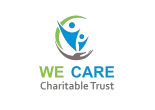Definition
Speech and language disorders refer to difficulties with verbal and nonverbal communication, affecting an individual’s ability to understand, speak, read, write, and comprehend language.
Types
- Articulation Disorders (e.g., lisping, stuttering)
- Fluency Disorders (e.g., stuttering)
- Voice Disorders (e.g., vocal cord dysfunction)
- Language Disorders (e.g., aphasia, language impairment)
- Swallowing Disorders (e.g., dysphagia)
Symptoms
- Difficulty articulating sounds or words
- Struggling to understand spoken language
- Trouble with word retrieval or vocabulary
- Stuttering or stammering
- Voice quality issues (pitch, volume, tone)
Causes/Risk Factors
- Genetics
- Brain injury or stroke
- Developmental delays
- Hearing loss or ear infections
- Neurological conditions (e.g., Parkinson’s, cerebral palsy)
Diagnosis
- Comprehensive speech and language evaluation
- Assessment tools (e.g., CELF, TACL)
- Medical evaluation (hearing, neurological)
Treatment/Interventions
- Speech Therapy (individual or group)
- Language Therapy (individual or group)
- Articulation Therapy
- Fluency Therapy (stuttering)
- Alternative Communication Methods (e.g., AAC)
Speech Therapy Techniques
- Phonological Awareness
- Articulation Therapy
- Language Expansion
- Conversational Therapy
- Parent-Child Interaction Therapy
Om Sai Child Development Center’s Approach
- Multidisciplinary team (SLP, OT, PT, Psychology)
- Comprehensive assessment and diagnosis
- Individualized treatment plans
- Family-centered care and education
- Ongoing monitoring and adjustments
Strategies for Parents/Caregivers
- Encourage communication attempts
- Use visual aids and gestures
- Model correct articulation
- Read together daily
- Engage in conversations
By addressing speech and language disorders, We helps individuals develop effective communication skills, enhancing their social, emotional, and academic well-being.
